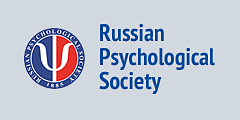
School of Psychology
-
Adverse Childhood Experiences in Mexico: Prevalence and Association with Sociodemographic Variables and Health StatusSánchez-Jáuregui, T. de J.; Téllez, A.; Almaraz, D.; Valdez, A.; Hinojosa-Fernandez, R.; García-Balvaneda, H.; Juárez-García, D.M.PDF HTML4662“ CITE
Sánchez-Jáuregui, T., Téllez, A., Almaraz, D., Valdez, A., Hinojosa-Fernández, R., García-Balvaneda, H., Juárez-García, D.M. (2023). Adverse Childhood Experiences in Mexico: Prevalence and Association with Sociodemographic Variables and Health Status. Psychology in Russia: State of the Art, 16(2), 48–62. DOI: 10.11621/pir.2023.0204
copied
-
Background. Adverse Childhood Experiences (ACEs) refer to a semantic field of negative childhood events that, in conjunction with insufficient personal, family, or contextual coping resources, have the potential of becoming traumatic.
Objective. To assess the prevalence of Adverse Childhood Experiences (ACEs) and their association with sociodemographic variables and physical and mental illnesses in a Mexican sample.
Design. A cross-sectional design was used. The sample included 917 Mexican adults who responded to the Adverse Childhood Experiences International Questionnaire (ACE-IQ). Most of the participants were female (79.3%) with an average age of 37 years, a monthly income between 500 and 2,500 USD (59.2%), had completed university education (45.6%) and were married or in a common-law marriage (53.1%). Data was collected through Google Forms, and the link to the form was shared through electronic social networks.
Results. A total of 48.3% of the participants presented seven to nine types of ACEs. Among their responses, the most prevalent categories were emotional neglect (95.1%), family violence (83.3%), and emotional abuse (78.6%). A significant association was found between the number of ACEs and the mental illness diagnosis (x2(20) = 15.16; p < .001). Women were found to report more experiences of sexual abuse (z = -6.62, p < .001), whereas men reported more experiences of community violence (z = -4.27, p < .001) and collective violence (z = -3.94, p < .001).
Conclusions. The prevalence of ACEs in the Mexican population is high. However, men and women reported differences in certain types of ACEs. It was found that people with a diagnosis and family history of mental illnesses presented a higher number of ACE categories.
DOI: 10.11621/pir.2023.0204
Keywords: Adverse Childhood Experiences/ mental illnesses/ sexual abuse/ community violence/ ACE-IQ/ ACEs prevalence
-
-
Psychological Distress, Fatigue and Quality of Life in Patients with Gastrointestinal Stromal TumorsCarbajal-López, E.B.; Juárez-García, D.M.; Sánchez-Jáuregui, T. de J.; Espinoza-Velazco, A.; Calderillo-Ruiz, G.; Salas-Benavides, R.PDF HTML5021“ CITE
Carbajal-López, E.B., Juárez-García, D.M., Sánchez-Jauregui, T.J., Espinoza-Velazco, A., Calderillo-Ruiz, G., Salas-Benavides, R. (2022). Psychological Distress, Fatigue and Quality of Life in patients with Gastrointestinal Stromal Tumors. Psychology in Russia: State of the Art, 15(2), 3-13. DOI: 10.11621/pir.2022.0201
copied
-
Background. Gastrointestinal stromal tumors (GIST) represent 1% of all gastrointestinal tumors and are included in the list of rare diseases.
Objective. 1. to evaluate levels of psychological distress, fatigue, and quality of life. 2. To identify the variables that most influence distress among Mexican patients with GIST.
Design. A cross-sectional study was conducted with a consecutive sample of 100 patients with GIST, who completed the following questionnaires online: Hospital Anxiety and Depression Scale (HADS) as a measure of distress, Multidimensional Fatigue Inventory (MFI), and Quality of Life Questionnaire (QLQ C30).
Results. Distress was present in 31% of patients. No association was found between distress and sociodemographic/clinical variables. The patients with distress demonstrated higher scores in all fatigue dimensions and, regarding quality of life, had more symptoms and were lower functioning. Distress was positively associated with all fatigue dimensions and with QLQ C30 symptoms. Negative associations were found between distress and QLQ C30 functioning dimensions. The predictors of psychological distress were general fatigue, reduced motivation, and emotional functioning.
Conclusion. The percentage of patients with distress was akin to the levels found in patients with the most common types of cancer. Fatigue in patients with GIST should be evaluated and managed to improve distress levels.
DOI: 10.11621/pir.2022.0201
Keywords: Gastrointestinal stromal tumors (GIST)/ distress/ fatigue / quality of life/ cancer
-
-
Validation of Emotional Thermometers as Screening Tools for Mexican Patients Undergoing Breast Biopsies
-
Background. The need to evaluate the emotional changes women experience during the diagnostic stage of breast cancer creates the need for easily applicable short screening tools; thus, evaluations which rely on a single question and visual analogical scales are widely used in hospital environments.
Objective. This study aimed to determine the optimal cut-off points for anxiety, depression, and stress emotional thermometers measured against the Hospital Anxiety and Depression Scale anxiety and depression sub-scales (HADS-A and HADS-D), and the Cohen Perceived Stress Scale-14, respectively; in addition, the study aimed to evaluate the prevalence of these changes in women scheduled for breast biopsies.
Design. The study included 221 women who were scheduled for breast biopsies; their agesranged between28 and80 years old. They were individually evaluated using the Emotional Thermometers, the HADS-A, theHADS-D, and the PSS-14 before undergoingtheir biopsies. Data from 203 participants were analyzed.
Results. The following optimal cut-off points were obtained: 3 for the anxiety emotional thermometer (ET) (sensitivity 0.71, specificity 0.25); 3 for the depression ET (sensitivity 0.87, specificity 0.34); and 4 for the stress ET(sensitivity 0.80, specificity 0.43). According to these cut-off points, 56% of the patients exhibited anxiety, 40% exhibited depression, and 55% exhibited stress.
Conclusion. Using emotional thermometers to screen anxiety, depression, and stress is therefore recommended in the context of breast biopsies.
DOI: 10.11621/pir.2020.0207
Keywords: emotional thermometer; breast biopsy; anxiety; depression; stress
-
-
The effect of hypnotherapy on the quality of life in women with breast cancerTéllez, A.; Sánchez-Jáuregui, T. de J.; Juárez-García, D.M.; Jaime-Bernal, L.; Medina De la Garza Carlos E.
-
Background. Cancer is a chronic disease that significantly affects the quality of life of patients who suffer from it, because they must face stressful situations, including their diagnosis, surgical procedures, and the adverse effects of chemotherapy and radiotherapy.
Objective. To evaluate the effects of hypnotherapy on breast cancer patients’ quality of life during chemotherapy.
Design. A quasi-experimental design was used with a convenience sample. Method. Two groups of patients with early breast cancer diagnoses were assigned to either a control group that received standard medical care (n = 20), or a hypnotherapy group (n = 20) that received 12 intensive sessions over the course of 1 month, and 12 additional sessions over the course of 6 months. The patients’ quality of life was evaluated using the European Organization for the Research and Treatment of Cancer Quality of Life Questionnaire Core 30 (EORTC QLQ-C30).
Results. The hypnotherapy group showed a statistically significant improvement and a large effect size on the cognitive functioning and social functioning scales compared to the control group. The physical functioning, role functioning, and quality of life scales showed improvement with a medium effect size, but the changes were not statistically significant.
Conclusion. The improvement observed in the cognitive functioning and social functioning scales allows us to suggest that hypnotherapy improves the quality of life of breast cancer patients during chemotherapy.
DOI: 10.11621/pir.2017.0216
Keywords: hypnotherapy, quality of life, breast cancer, cognitive functioning and social functioning
-
-
Luria’s model of the functional units of the brain and the neuropsychology of dreaming
-
Traditionally, neuropsychology has focused on identifying the brain mechanisms of specific psychological processes, such as attention, motor skills, perception, memory, language, and consciousness, as well as their corresponding disorders. However, there are psychological processes that have received little attention in this field, such as dreaming. This study examined the clinical and experimental neuropsychological research relevant to dreaming, ranging from sleep disorders in patients with brain damage, to brain functioning during REM sleep, using different methods of brain imaging. These findings were analyzed within the framework of Luria’s Three Functional Unit Model of the Brain, and a proposal was made to explain certain of the essential characteristics of dreaming. This explanation describes how, during dreaming, an activation of the First Functional Unit occurs, comprising the reticular formation of the brainstem; this activates, in turn, the Second Functional Unit — which is formed by the parietal, occipital, and temporal lobes and Unit L, which is comprised of the limbic system, as well as simultaneous hypo-functioning of the Third Functional Unit (frontal lobe). This activity produces a perception of hallucinatory images of various sensory modes, as well as a lack of inhibition, a non-selfreflexive thought process, and a lack of planning and direction of such oneiric images. Dreaming is considered a type of natural confabulation, similar to the one that occurs in patients with frontal lobe damage or schizophrenia. The study also suggests that the confabulatory, bizarre, and impulsive nature of dreaming has a function in the cognitiveemotional homeostasis that aids proper brain function throughout the day.
DOI: 10.11621/pir.2016.0407
Keywords: dreaming, brain, neuropsychology, functional units, Luria´s model
-









